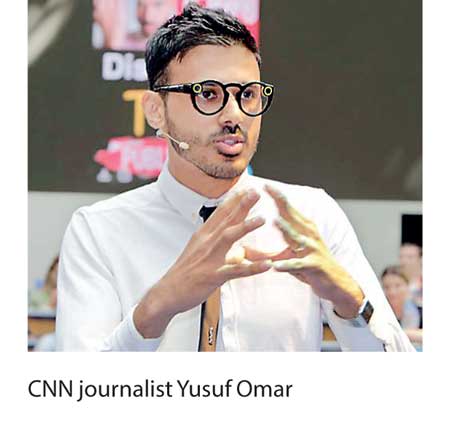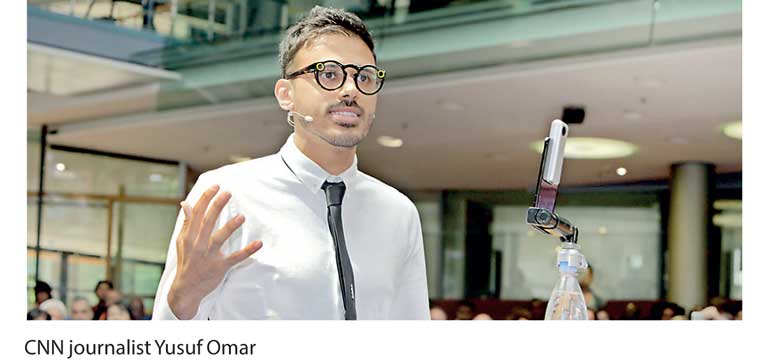Monday Apr 21, 2025
Monday Apr 21, 2025
Friday, 30 June 2017 00:00 - - {{hitsCtrl.values.hits}}
 Most journalism discussions today include a debate on the merits and disadvantages of social media. The inaugural day of DW’s Global Media Forum last week was similarly steeped in a discussion about social networks.
Most journalism discussions today include a debate on the merits and disadvantages of social media. The inaugural day of DW’s Global Media Forum last week was similarly steeped in a discussion about social networks.
CNN journalist Yusuf Omar knows his way around social media. He calls his brand of reporting “jeans journalism,” because everything he needs, from making a video to taking pictures and interviews, fits in his jeans. Omar’s style of journalism caters to the smartphone generation – toaudiences who like their news on the move.
True to his cause, he used social media and apps like Snapchat to document his journey from South Africa to Damascus. On a trip to India, where the law prohibits journalists from using the identities of rape survivors, Omar used a Snapchat filter to film victims’ stories in their own words.
Mobile audiences want raw, authentic stories, not polished, television-style broadcasts, he says.
Social media, according to Omar, helps news outlets like CNN reach their consumers without asking them to tune into their programming.
“For journalists, digitalisation is, first and foremost, a direct link to our users ... for international broadcasters, social media offers a great opportunity to reach out to our users directly on their mobile phones,” said DW’s Director General Peter Limbourg, who held the keynote address at the Global Media Forum’s (GMF) inaugural session in Bonn on Monday.
However, social media and its wide reach have also ensured access for lobbies, interest groups and other factions propagating fake news.
Pakistani journalist Talha Hashmi, a guest at this year’s Global Media Forum in Bonn, believes that the trend of fake news means that “social media is a bigger threat than nuclear weapons right now.”
“What usually happens is that ordinary people usually are not educated, they have never done research and they have neither the experience nor the exposure,” he said. “They also don’t have any source to verify the news they are getting.”
Hashmi cited the example of a picture of a girl that has been doing the rounds on Facebook for the last five years. The post says that the child has been missing and needs to be reunited with her father.
“The child had got lost five years ago in Hyderabad, in India,” he said. “She was reunited with her [family] three months later. And five years later, people are still circulating her picture ... there needs to be some kind of control.”
This is where the journalist comes in. A reporter’s job “is to inform,” said DW Director General Limbourg. Journalists can help establish the authenticity of news because they can build trust with their viewers and readers. “We want to enable them to improve their understanding of the world,” he added.
Journalists visiting this year’s GMF are trying to do exactly that - meet more people and learn new tools to enhance their understanding. The three-day long forum, which is focusing on “identity and diversity” this year, includes a series of workshops, speeches and panel discussions on freedom of speech, satire, digitalisation and citizen journalism.
Suleman Sadat, a political journalist from Pakistan who often goes on mobile reporting assignments, is looking forward to gaining interesting perspectives and new tools for his job. “I am expecting that I get more tech-savvy, that I will get to know new things.”
Loai Ahmed, a political journalist from Jordan, is visiting the GMF for the first time. He and his colleagues are exhibiting a series of politically critical cartoons.
“I think it is a good opportunity to express what we do and to show what we are working on ... we are expecting to get a lot of information here,” he said.